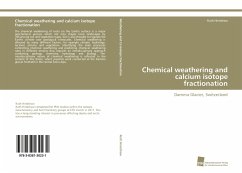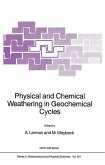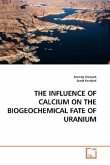The chemical weathering of rocks on the Earth's surface is a major geochemical process which not only shapes local landscapes by influencing soil and vegetation types, but is also thought to regulate the Earth's climate over geological timescales. Chemical weathering is affected by many different factors, for example climate, hydrology, tectonic activity and vegetation. Identifying the main processes controlling chemical weathering and predicting chemical weathering rates in different terrains thus requires an interdisciplinary approach combining geology, chemistry, hydrology and biology. The interdisciplinary nature of chemical weathering is reflected in the content of this thesis, which presents work conducted at the Damma glacier forefield in the central Swiss Alps.
Bitte wählen Sie Ihr Anliegen aus.
Rechnungen
Retourenschein anfordern
Bestellstatus
Storno








